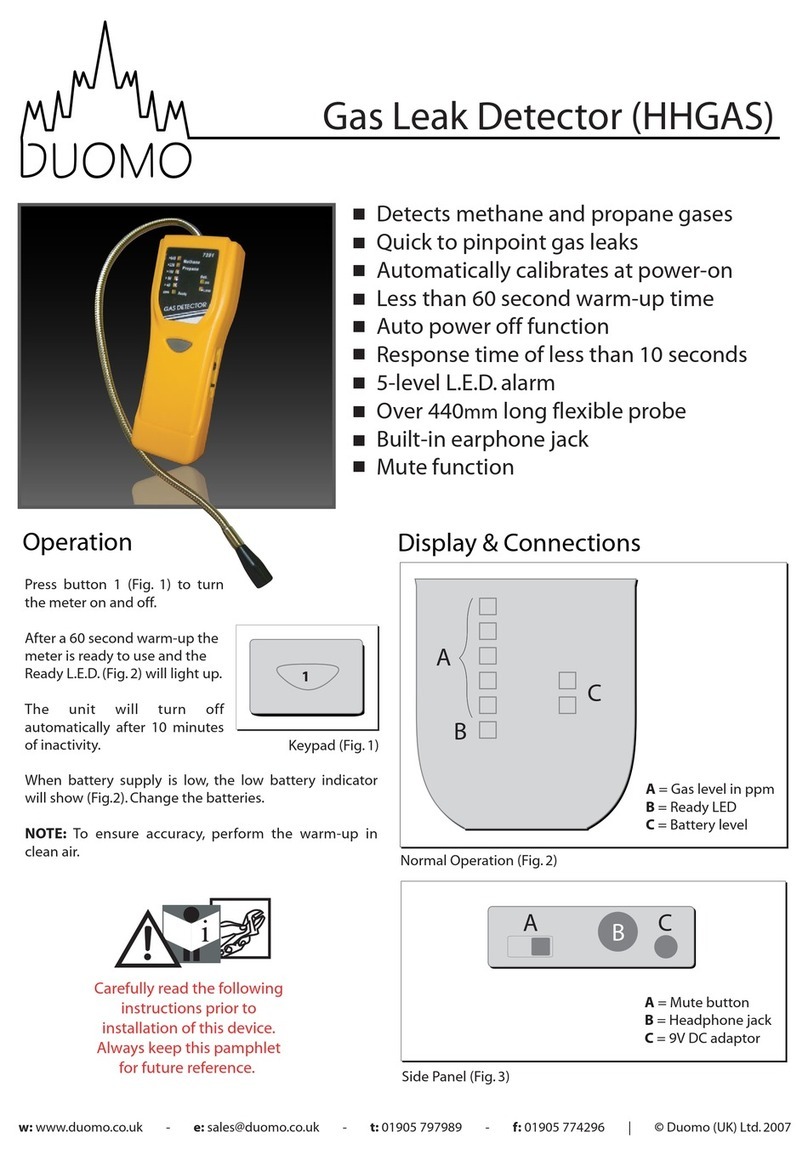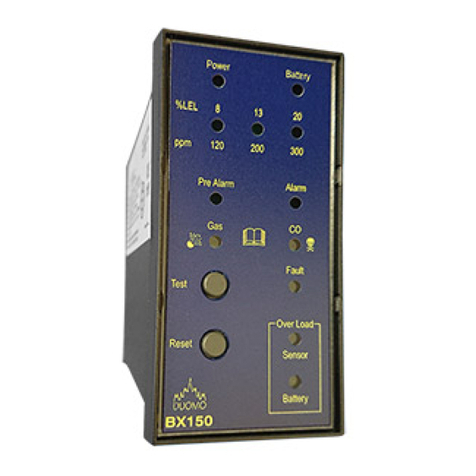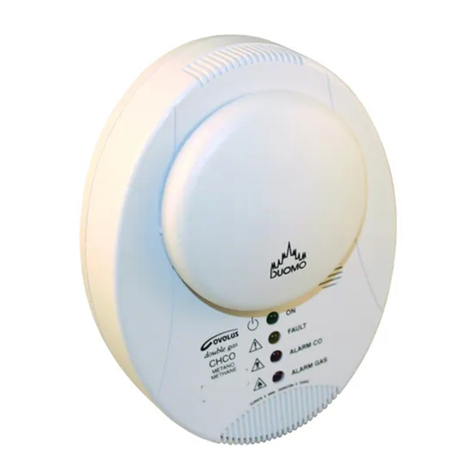
BX444 Gas Detector
Detects Carbon Monoxide,Natural Gas & L.P.G.
230V and 12V DC.
One, two, three or four Zone.
Self Diagnostic
Manual or Automatic Reset
Adjustable Pre-Alarm
Catalytic and Electrochemical Sensors
Audible Alarm
Sensor Fault Alarm
Manual Test Function
144 x 144 DIN Enclosure
Panel or wall Mounting
1 Year Guarantee
Duomo is recognised within the Gas industry for
providing a comprehensive range of low cost, high
reliability gas detection for many applications. We
have installed and commissioned Natural gas and
carbon monoxide sensors in applications such as
boiler rooms, kitchens, car parks, aircraft hangars,
factories and shopping centres.
Application
The BX444 has been designed to meet all European
Normative proposals for the detection of Natural Gas,
LPGandCarbonMonoxideGasDetectors.TheBX444
is provides protection from gas leakage in areas such
as Boiler Rooms Roof spaces unventilated voids. Car-
bon Monoxide is an invisible, odourless gas which in-
hibits the bodies ability to process Oxygen. The BX444
protects against this in underground or poorly venti-
lated car parks, boiler rooms, vehicle servicing areas
etc. Remote sensors are installed in the areas which
requireconnectedtoremotesensorslocatedinthepro-
tected area. The 144 x 144 enclosure is wall or panel
mounting.
Operation
If the remote sensors sense the presence of Gas the
detector operates a pre-alarm relay - used for remote
sirens or extract fans; if the level of gas continues to
rise then the main alarm relay is activated to, either in
the case of explosive gases, break the electrical sup-
plyto the Safety Shut OffValveorforCOsound a Gen-
eral Alarm to allow evacuation of the area.
Features
The Pre-Alarmcanbeadjusted, inthecaseofNatu-
ral Gas or LPG, from 8% to 15% of the Lower Ex-
plosive Level (LEL). For Carbon Monoxide, it can
be adjusted from 120ppm to 250ppm. The Main
Alarm thresholds are not adjustable and are fixed at
20% LEL for explosive gas and 300 ppm for Car-
bon Monoxide. The detectors can be set for either
toxic or explosive Gas. Or both.
It is possible to set one zone for explosive gas such
as Natural Gas or LPG and another for toxic gas for
example Carbon Monoxide. An LED display on the
fascia indicates the levels of detected gas in either:-
parts per million (ppm) or percentage of Lower Ex-
plosive Level (%LEL). Lights above the display indi-
cate which sensor the Numeric LED display refers
to. It is possible to use the detector as a one, two,
three or four zone by enabling or disabling each
channel.
A ‘TEST’ button on the facia, when pressed, checks
the complete function of the BX444 and sensors. A
permanent diagnosticcheckismadeofsensorfunc-
tion. If any sensors should become faulty or be con-
nected incorrectly the ‘FAULT’ light will illuminate
and the detector will fail safe.
CAUTION!
Carefully read the following instructions prior to installation of this device. Always
keep this pamphlet for future reference. Ensure that the gas detection system is
wired correctly, the appropriate sensor is installed and used only for the purpose
which it is intended.
BX444 Four Zone
Gas Detector



































